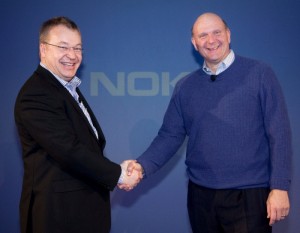Nokia’s tablet strategy – Or lack thereof
In August last year, Nokia’s Nicklas Savander sat down with the fine folks at Engadget to discuss a number of issue regarding Nokia’s future and their upcoming products.
One of the more pointed questions asked was whether Nokia had any plans to enter the tablet space in the near future. The choice quotes from his answer follow below.
“First of all, I think it’s going to be a very crowded market. Based on what I hear, everybody is going to put them out. There’s going to be Android tablets, MeeGo tablets, Windows tablets… you name it. It’s going to be very crowded. The question for any vendor is going to become, “What is the uniqueness that you can provide in that space?”
“I personally also think you have to look at the use case, -“
More recent quotes from Stephen Elop at Nokia’s Capital Market’s Day hint that multiple approaches are being looked at in approaching the tablet market but as of right now there were no concrete plans to do so.
A few of us here had thought that based on the MeeGo tablet UX‘s we’d been seeing for a couple months, coupled with Nokia’s dedication to Qt and it’s cross-platform capabilities, that Nokia’s tablet strategy would revolve around the above-mentioned projects. In light of recent events however, it’s hard to imagine that Nokia will be continuing in this vein. Thusly one has to wonder what, if any tablet strategies Nokia has on the cards.
There are only 3 major OS’s right now with serious tablet capabilities. Tablet capabilities in this sense intimate devices with screens in excess of 6 inches diagonally and greater capabilities and differing user interfaces from our common mobile devices. All of these “tablet OS’s” in some way are examples of repurposing something initially
The three better known tablet OS’s being iOS, Android and Windows 7.  The former two in their current incarnations don’t differ too much from their mobile counterparts whereas the latter, while much more highly functional is less than optimized for the tablet experience. MeeGo as an OS had the core OS above which were placed a number of  “experiences”, Tablet, Netbook, Handset etc. This would allow for a high degree of customization of the user-facing elements of the OS as opposed to changing the look of one or two applications while maintaining the same UI across the board as is seen in iOS and Android.

The idea for this strategy and approach was a sound one, Nokia could use the exact OS and attack so many different markets while not having to incur the development and time costs involved in creating an OS for each of these possible devices. Unfortunately, given MeeGo’s recent demotion to a “future disruption” oriented project by Nokia, it’s hard to see how they’ll be approaching this segment if at all. Apple has managed as of right now to hold an 83% marketshare of tablets, having sold ~15 million of these over the course of 2010. Considering the fact that this is a fledgling market, likely to see similar growth as the smartphone market in the near future and considering that Apple achieves gross margins of ~32% on an ASP of $633 it’s pretty obvious that missing out on this market is a huge loss for ANY company and even moreso for Nokia.
The recent partnership with Microsoft, and Microsoft’s tight-lipped-ness about their own tablet strategy, coupled with rumours of a Windows tablet-focused OS being on the way, seems to indicate that Nokia may be preparing to deepen the relationship/reliance on Microsoft in the near future even more so than their smartphone strategy seems to indicate.
What approach do you think Nokia will be taking in the tablet space? What do you think of tablets as the PC of the future? Sound off in the comments section
Category: Nokia







Connect
Connect with us on the following social media platforms.